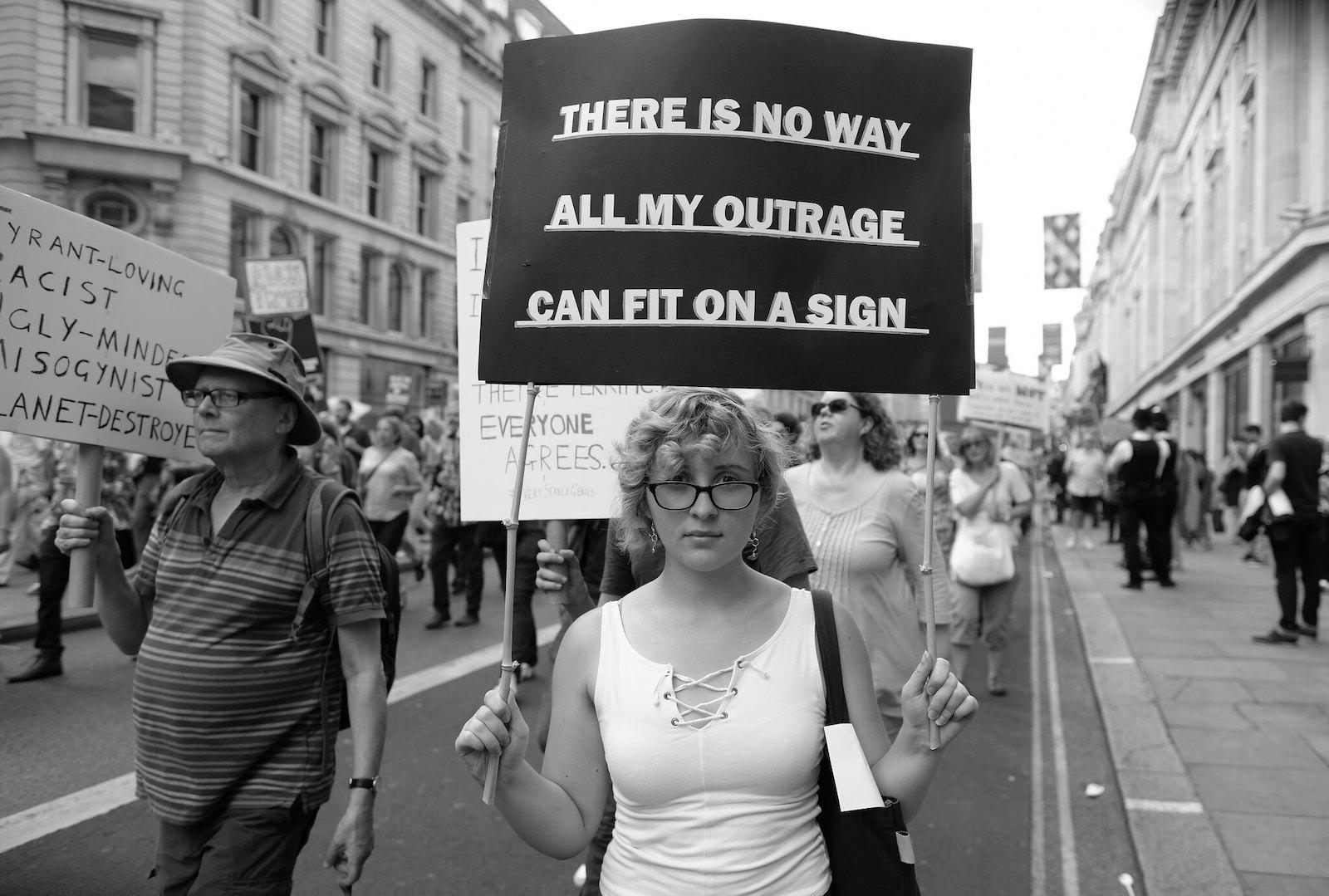Within the last few years, the U.S. has been no stranger to activism and protests. Between the #MeToo movement, the Black Lives Matter movement, and now the response to the overturn of Roe v. Wade, it is clear that acts of resistance won’t be going out of style any time soon.
Demonstrations of civil unrest are a fundamental part of American history. They unify marginalized individuals and give voices to groups who are so often silenced. Although the messages of protest signs can greatly differ from one another, the signs themselves always share a few general trademarks.
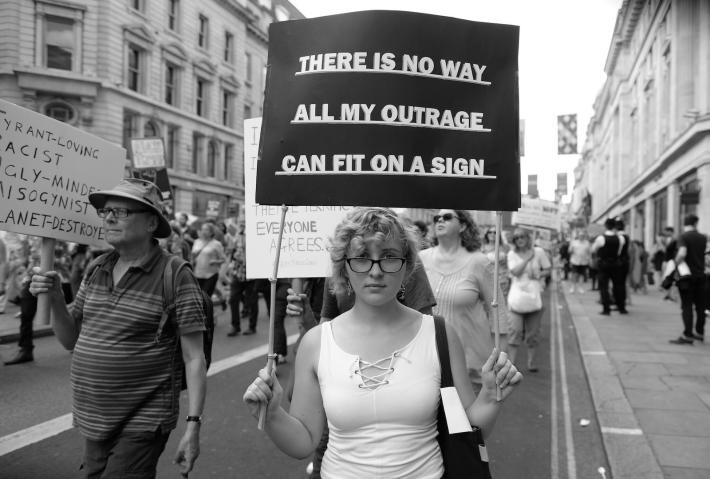
Bold, easy-to-read text is the linchpin of these kinds of signs. Protest signs are displayed, naturally, at protests, so it is important that the words on a sign are legible amidst a crowd of people and readable even at far distances. These words usually form a short yet impactful phrase connected to the movement.
Alternately, a sign might call for action, sometimes even directly naming members of the government and brazenly stating what they’ve done wrong.
Some protest signs go completely without text, in which case they’re embellished with illustrations or symbols. Like the phrases, these symbols are often simple, impactful, and easily associated with their respective campaigns.
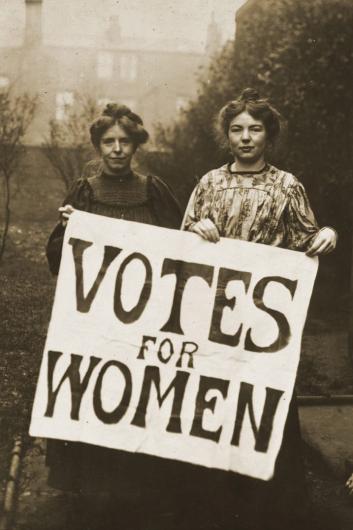
WSPU leaders Annie Kenney (left) and Christabel Pankhurst (right).
Many, if not all, of the earliest women’s suffrage signs relied on nothing more than words. The women’s suffrage movement had no recognizable illustrations or symbols, but it did have three simple words: “Votes For Women”. This phrase perfectly encapsulates what the suffragettes were fighting for. Other signs would put a focus on suffragettes who had been arrested, demanding they be released rather than be treated as criminals.
After women got the right to vote in 1920 (well, wealthy white women, at least. This isn’t taking into account the racial biases, literacy tests, voter ID requirements, and voting taxes, all of which affected and continues to affect impoverished women and women of color), the designs and calling cards of women’s rights protest signs slowly but drastically changed.
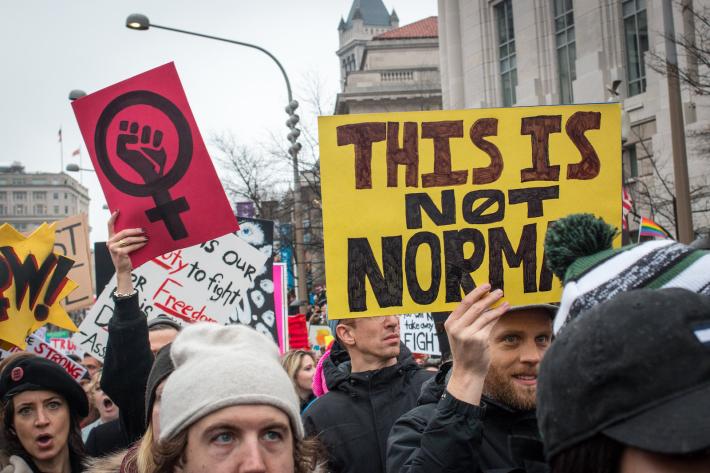
The biggest female rights protest of the last decade was the 2017 Women’s March in Washington, D.C. Many signs were pink or included splashes of the color to represent femininity and womanhood. The astrological symbol for Venus, aka the traditional symbol associated with female identity, was also heavily featured. Because the Women’s March was a direct response to the contemporaneous presidential inauguration of Donald Trump, many signs also included satirical comments and illustrations referencing the off-color things the former President has said about women.
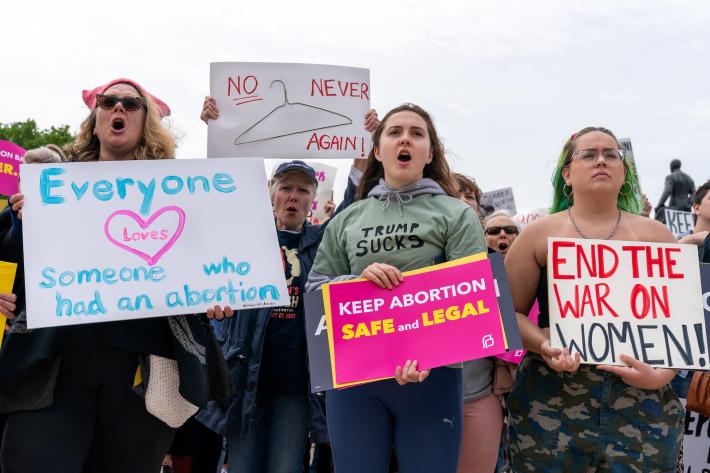
“My Body, My Choice”, or some iteration of that, is not uncommon to find on the signs of Pro-Choice protesters. The phrase has been used in the context of women’s rights since the 1970s, but it specifically refers to the resistance to governmental or societal control over the female reproductive system. This goes hand in hand with depictions of a uterus, symbolically used to represent a demand for ownership over one’s body. The coat hanger is another recognizable symbol, if a particularly grim one. It represents abortions performed under unsafe circumstances and a need for safe, legal access to medical abortions.
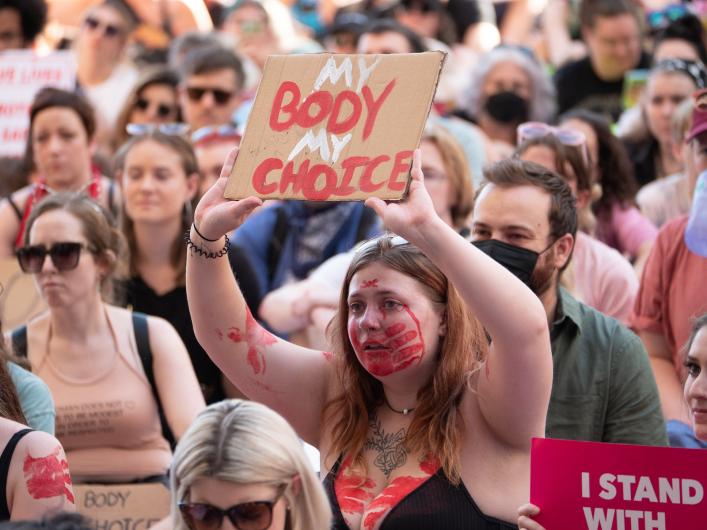
Recently, however, the phrase “My Body, My Choice” has been co-opted by individuals who feel that government-mandated face mask requirements are unconstitutional. This group has twisted the 'Body' portion of the saying to mean their face, nose, or mouth, arguing that they should have the right to choose to not wear a protective face mask during a pandemic.
However infuriating, the adoption of such symbols or phrases from one social movement into a different one is not particularly uncommon. Another example of this would be yellow Pro-Choice signs in which a snake makes the outline of a uterus with the words “Don't Tread On Me” printed underneath, a clear parody/reimagining of the famous Gadsden flag.
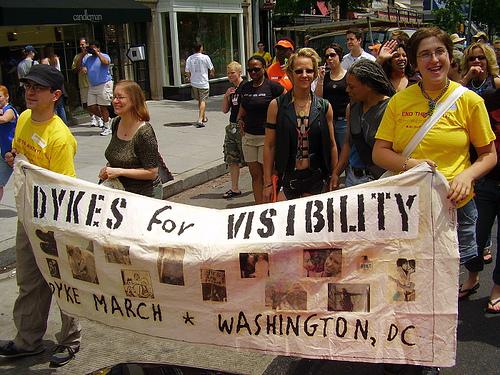
Protest signs for gay rights movements are unique in the sense that they celebrate reclamation. In Nazi Germany, homosexual men were forcibly labeled with a simple pink triangle. Since then, the LGBTQ+ community has adopted the symbol to represent their pride and queer identity. Speaking of, the word queer is another example of this, beginning as a derogatory word that has since, for some, turned into a positive identifying term. In the Lesbian community, it is not uncommon to see people referring to themselves as dykes, another positively reclaimed slur.
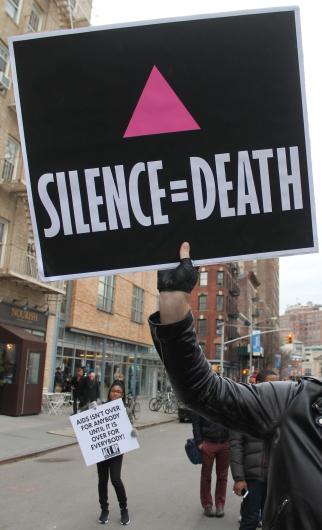
Another theme one might see when it comes to queer protest signs, especially ones from the 1980s, is the phrase, "Silence = Death." This adds to the trend of short, easy-to-remember slogans that can be associated with a certain group or event. The slogan was created in 1986 as a call to action aimed at the American government, and probably Reagan specifically, pushing them to actually talk about and find solutions to the ever-spreading AIDs epidemic. Although "Silence = Death" was created for a specific event, it has become extremely recognizable and is still used in LGBTQ+ rights protests today.
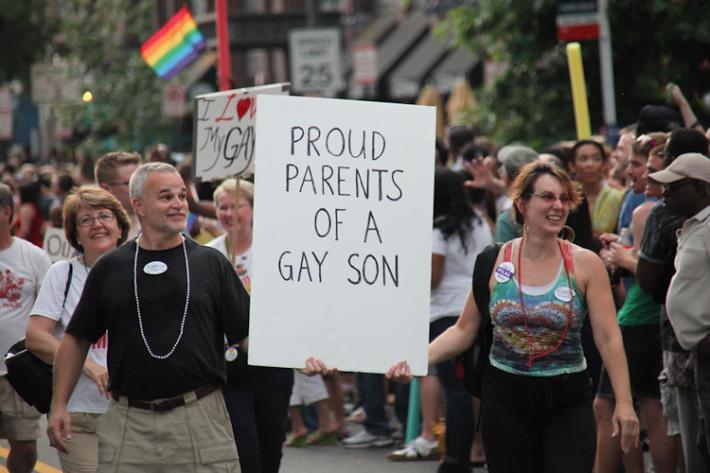
Gay rights signs also often promote normalization and support. Being a lesbian, a gay person, a bisexual, or a transgender person used to mean having to hide a large part of yourself to avoid ostracization or physical violence. Unfortunately, it still means that for too many people. To counter this, many signs are decorated with phrases like, “Proud Dad/Mom of a Queer Kid” or “I’m Proud of my Gay/Trans Child." Even though the people who carry these signs may not be in the queer community themselves, they’re still playing a part in countering homophobia by openly displaying their allyship.
Gail Ostbye
Gail Ostbye is a rising senior at the University of North Carolina at Greensboro and a current intern at Art & Object. She is majoring in English and hopes to enter a career in editing. When she isn’t working she enjoys writing songs in her free time.




